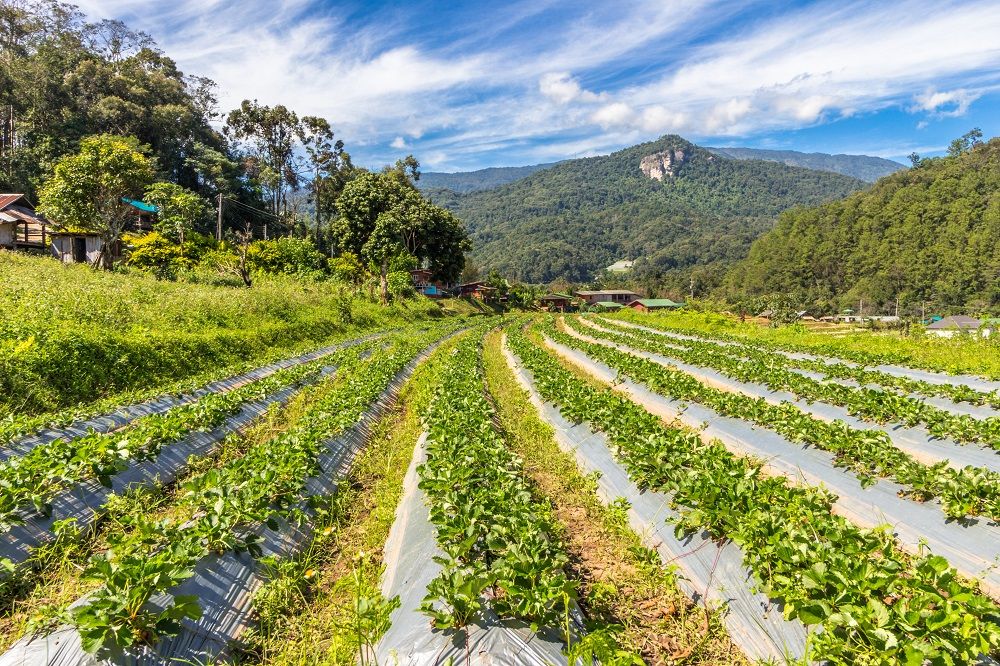Getting to Know Terracing Farming Techniques

Terracing Farming Techniques
(Istimewa)One of the agriculture traditions that has been passed down from generations of farmers in Indonesia is planting on the side of hills or what is called Terasering or Terracing planting. You might recognize this planting technique from the rice paddies in Bali or tea farms in the mountains around Java. This technique of planting on hillsides has been around for a long time and utilizes land that otherwise will be eroded by rainwater.
What is the terracing technique, and where can it be done
The terracing technique is done by turning a slope on the side of mountains or hillsides into a level, branched out steps (terrace) by removing soil and creating retaining walls. This restructuring allows un-farmable hillsides to become stable, productive farmlands. It also allows farmers in the highlands to grow crops without fear of landslides or nutrient runoff.
The technique is also beneficial for slowing down the draining of water from the top of the hills. It is done by making an outlet for water to drain into the terrace below. As the water goes down, the terrace wall stops the water and prevents it from gaining enough speed to cause erosion. Typically the size of the terrace is about 2-3 meters wide and 50-80 meters long.
There are a few types of terraces that depend on the degree of the slope. For example, a terrace made on land with a slope of less than three percent is called a level terrace. This type of terrace has the goal of improving water drainage and the level of moisture in the soil. The level terrace is made by digging the soil according to the height line, and then the excavated soil is backfilled to the outer edge, making a border-like mound on each terrace. Each mound is then planted with grass to help reduce the water runoff.
Next is the ridge terrace or teras kridit, that is made on land with a slope of 3-10 percent. The main goal of this type of terrace is to maintain soil fertility by slowing down the nutrients runoff from the top side of the slope. As water flows through this sloped land, not only can it carry soil and cause erosion, but it also carries nutrients from the top. Without the slowing down effects of the terracing, the fertility of the soil can reduce significantly. Making this type of terrace starts with making the terrace reinforcing path parallel to the Highline and planting terrace strengthening plants such as calliandra.
After that, there’s the contour terrace or teras guludan that is made on land with a slope of 10-50 percent and aims to prevent the loss of the soil layer. The contour terrace is also often called mound terrace due to how it is made. This type of terrace is made by excavating the surface of the slope, then placing the remainder of the excavated soil on mounds in the sloping direction of the slope. The hole from the excavated soil can then be used as waterways.
Lastly, there’s the bench terrace that is made on land with a slope of 10-30 percent and aims to prevent erosion on the slopes planted with secondary crops. This type of terrace is what you typically see in terracing rice paddies where the growing medium is flat. Making this type of terrace is quite heavy work and can cost more than making other types of terraces. But with the leveled-out growing medium, it means that the land can become fully functioning productive farmlands for many types of crops.
Benefits of terracing planting techniques
Though turning a slope into a terracing planting can be labor-intensive, it allows for continuous arable land for farmers in the region. This long-standing planting tradition also has the validation of science behind its benefit. As reported by Earth.com, researchers found that in China, terracing on a shallow slope decreased soil nutrient loss by 90 percent. It also decreases the amount of soil lost by 60-90 percent and increases general soil moisture by 21%. They also found that in Canada, planting potatoes with terracing on a steep slope reduced erosion by 20-1.
Overall, the terracing technique is beneficial for utilizing otherwise unused land on the hillside. They help reduce erosion of land and loss of nutrients. But most importantly, the terracing technique is known to be more water efficient than other soil planting techniques, making this technique suitable for land with a long dry climate.
Planting on terracing land typically includes crops such as barley, wheat, potatoes, corn, tea, olive, grape vines, coffee, rice, and other secondary crops. Generally, any plant can be planted on terracing land, with its water-controlled slope and high exposure to sunlight. It just depends on the level of slopes and what kind of terrace it’s planted on.
As with any other agricultural land, planting on terracing still requires the help of fertilizer to supply plants with a boost of nutrients. A choice between a liquid and granular fertilizer is typically done depending on the type of plant and what kind of terrace it’s planted on. For example, planting a tea plant doesn’t necessarily need a bench terrace. The plant can grow in a slightly sloped growing medium. But it does mean that it will require fertilizer that can be easily absorbed without needing to be mixed into the soil around the plant. This is why a liquid fertilizer is preferable for tea plants.
Another example is fertilizer for plants on a bench terrace, like a rice plant. Plants on a bench terrace have more options to choose between a liquid or granular fertilizer. The leveled growing medium means that the granular fertilizer can be mixed into the soil without the threat of it being uneven or threatening the safety of the farmer.(Demfarm/Safaanah)
